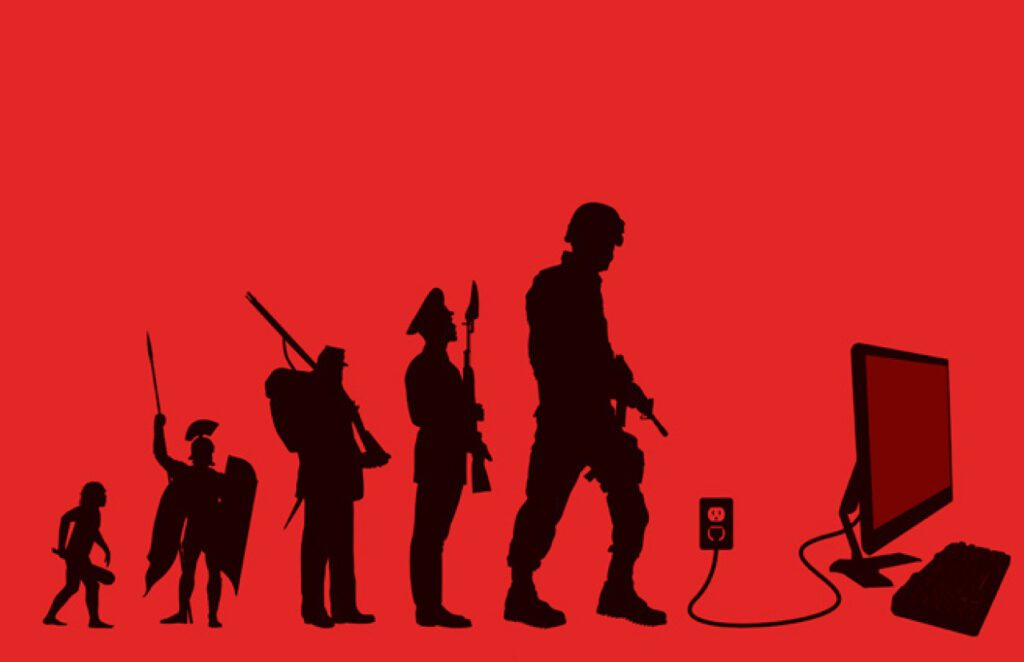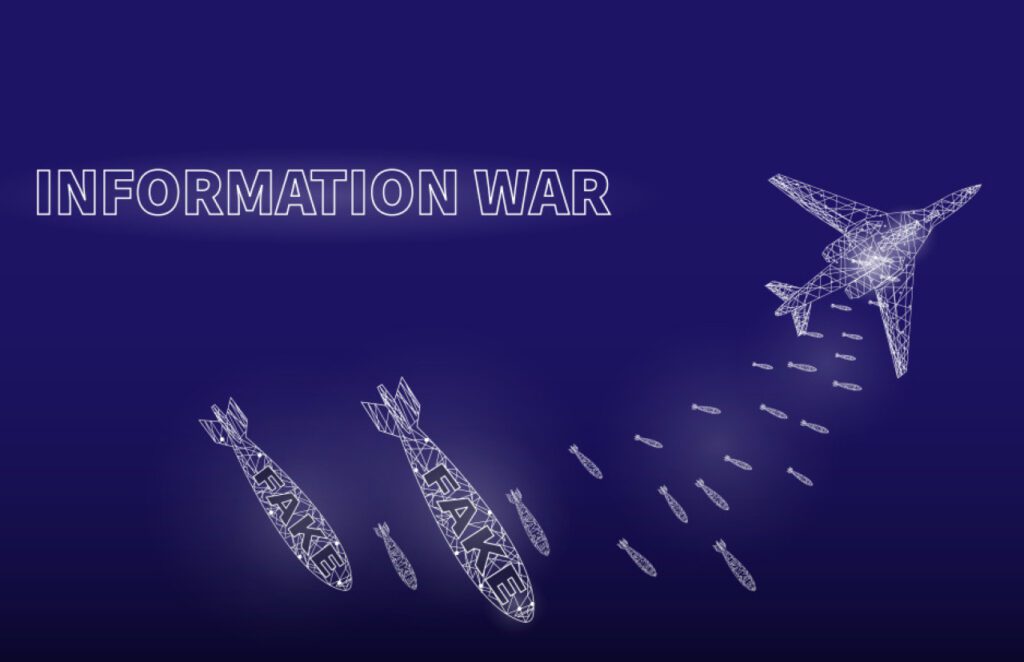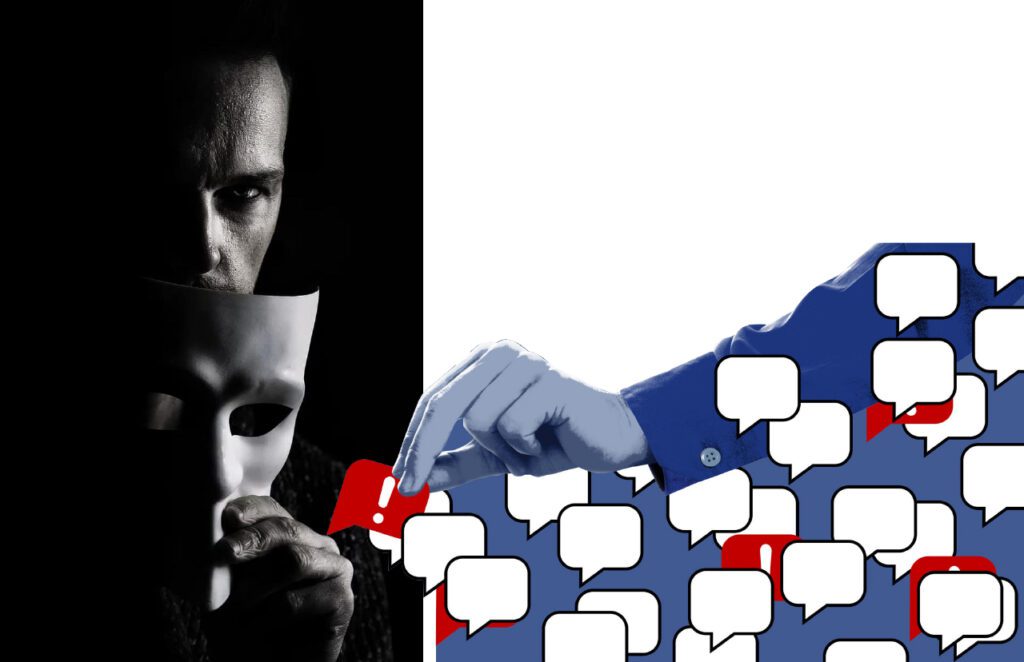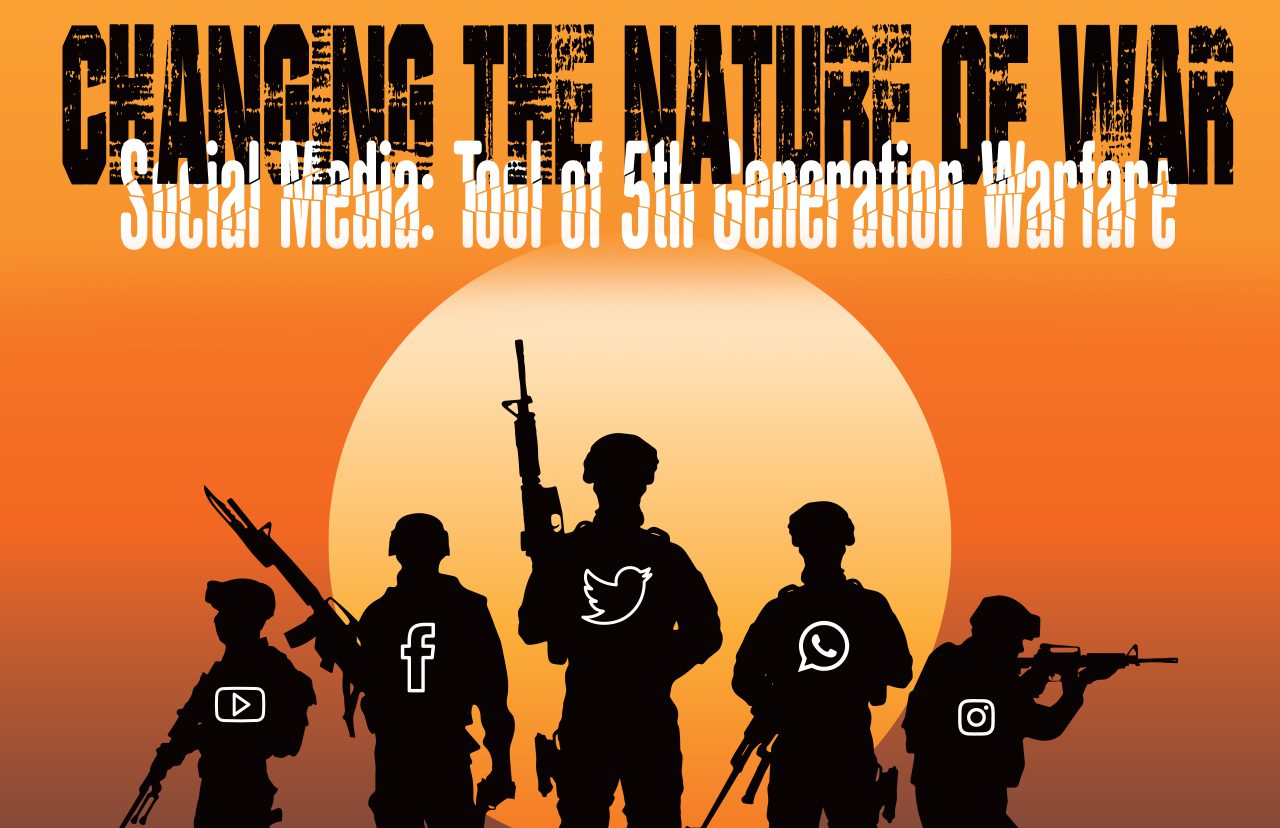Social Media: Tool of 5th Generation Warfare
War is one of the most primitive pursuits of mankind. As technology advanced, new tactics and strategies emerged to make the already-deadly endeavours progressively more lethal. However, contemporary war, termed 5th generation warfare, stands out from its predecessors in its nature and form. Social media is at the forefront of this new structure of warfare. It has shifted the onus from the usual state military fighting an announced war to a more devious form of warfare where several smaller, covert, non-state actors are using all means including social media platforms to target the very foundation of a targeted state.
IAF pilot Abhinandan has shot down a Pakistan Air Force F-16, flown by Gp Capt Agha Mehar Gul”. The news, along with the picture of the mentioned pilot, went viral especially in Indian circles. The Indian public was on moon, media went hysteric, celebrations started all across major Indian cities till the time the officer himself has to come up on the TV channels and social media websites stating ‘I am here…I am alive…take a close look’. Indian hysteria and festivity remained short lived.
“Government of Pakistan is planning to discontinue pension payments to the retired government employees” went viral on WhatsApp most recently, until the concerned ministry has to issue an official statement negating such claims. However, the damage has already been done.

Dr Fozia, a medical doctor in UK, was surprised to be bombarded with fake news as she worked on the covid wards and even more shocked to discover that some of the messages were coming from prominent people in the local community. They accused doctors of forcing people to sign ‘Do Not Resuscitate forms’, suggested that Covid-19 didn’t actually exist and one even told her she would be: “held responsible in the court of Allah for the deaths of these people, for negligence in this life, and life is very short.”
What is it? This is the question which keeps coming to our minds, keeps bothering us….with no convincing and absolute answers. Next up…Who is spreading this misinformation, fake news, and disinformation? Is it deliberate effort by some individual or a well-planned activity orchestrated by states, governments, spy agencies or is it just a few enthusiasts trying to get millions of likes, hits for gaining cheap popularity and making money in return. Or is it, somehow, linked to the present day most talked about, most sought-after buzz word, 5GW (Fifth Generation Warfare). In subsequent paragraphs we would try to understand the concept and most importantly the core of its dynamics, the ‘Social Media’.
In the history of mankind, no pursuit has been undertaken with such vigor as the art of waging war. There have been revolutionary advancements, innovative approaches, information tactics, non-conventional actors, the list goes on. From wars fought with weapons fashioned from wood to high-precision missiles to information warfare, it is apparent that humans are highly innovative when it comes to killing each other. According to researchers, mankind has gone through 4 stages of war, each deadlier and more complex than the last. The Five generations of warfare can be labeled as:
1st Generation Warfare: War of Line and Column.
2nd Generation Warfare: Trench Warfare.
3rd Generation Warfare: Maneuver Warfare.
4th Generation Warfare: Irregular Warfare (Guerrilla war).
5th Generation Warfare: A war of motives, technology and empowered individuals.
The lines between 4th and 5th generation warfare are blurred. The stage is being set for centuries for this evolved form of war. A horrifying instance of unconventional warfare was the use of radio in the Rwandan Genocide. A single Hutu influential station, Radio des Mille Collines (RTLM) played a major role in fear-mongering, rumors and panic after the plane carrying President Juvenal Habyarimana of Rwanda crashed under dubious circumstances. The radio station ceaselessly blared out verbal rhetoric promoting a kill-or-be-killed doctrine to the Hutu people. The radio, along with other propaganda mechanisms sparked a massive killing spree over 3 months that left up to 1 million Rwandans Tutsi massacred and 2 million refugees seeking safety in neighboring nations. Another very famous example can be Iraq’s ‘Weapons of Mass Destruction’ (WMD) as claimed by Bush Administration which turned out to be Weapons of Mass Deception, later.
Other earlier examples are Caesar and Alexander exploiting public relations messages, Napoleon using print media and the infamous Nazi propaganda machine designed by Hitler. In the contemporary world stage, technological innovation with tools like the media and the internet has made propaganda and the manipulation of facts easier than ever before. Owing to the speed and the vast spread of these mediums, the consequences and effects of information warfare have increased drastically. In 5th generation warfare, one of the primary objectives is to undertake violence so discreetly and in such a way that the victim is not even aware that he is a victim of war or the fact that he is losing. The secrecy of this type of tactics make 5th generation warfare the deadliest and most complex warfare in the course of history. Interestingly, 5th generation would never even be identified. 5th generation warfare focuses on culture and morality, distorting the perception of the populace to give a distorted vision of the world and politics. These elusive tactics uses the ‘rage of the people’ and the ‘rationality of the state.’ to instigate conflict and strife. Practioners of 5th generation warfare utilize cultural, religious and moral icons to defeat an icon. 5th generation warfare is the next step in the evolution of warfare. A set of tactics, albeit logically foreseeable, but still extremely complex and manipulative. Scholars and tacticians have identified 4 basic characteristics of the phenomenon:
New Domains of Conflict.
Changing Nature of Adversaries.
Changing Nature of Objectives.
Changing Nature of Force.
(a) New Domains of Conflict:
4th generation warfare took conflict beyond the physical battlefield into political domain. 5th generation warfare augmented 4th generation warfare by transcending the conflict further into fields of information, cognitive and social domains in addition to the physical and political arenas.

(b) Changing Nature of Adversaries:
5th generation warfare expands battlefield beyond the domains of 3GW and 4GW and makes it omnipresent. Official militaries no longer possess total dominance over warfare as it can be influenced and affected to an extent by non-state actors. Super-empowered individuals, gangs, ethnic or religious interests groups, social and political networks which potentially form influential combinations.
(c) Changing Nature of Objectives:
Wars have objectives and are dictated by ‘defeat mechanisms’. Defeat Mechanisms are the various processes and rationale that cause the physical and psychological damage that drive armies and states to defeat. In 5th generation warfare, defeat mechanism have changed drastically to involve targeting leadership development, alliance building, public and ideological narrative, acquisition of funding, material, infrastructure, recruitment, organization of efforts, indoctrination and training of personnel, planning and target, movement and operations, communication, the list goes on.
(d) Changing Nature of Force:
In 5th generation warfare “Force as a concept” exceeds to involve all sorts of means imaginable, kinetic or non- kinetic, military or non-military and is utilized in different combinations to overcome a military adversary. States may be less likely to be opponents; non-state actors, transnational entities, and even intelligentsia-backed individuals will become more relevant, so that a state may face several small enemies, rather than one or two major ones. As Sun Tzu said in “The Art of War”: “The best victory is when the opponent surrenders of its own accord before there are any actual hostilities….it is best to win without fighting.”
Social Media at the Core
The nature and pervasiveness of social media makes it the perfect tool for 5th generation warfare. Since 5th generation warfare mandates exploitation and manipulation of perceptions of the general public, social media’s design gives it the ability to be yielded for these ulterior motives. Sun Tzu predicted these tactics as the “Acme of skill (a victory without fighting)”. According to analysts, Pakistan’s geographical position and its plethora of resources is a gift as well as a challenge, as it has prompted a never-ending onslaught from foreign forces. Over the years, instead of being an advantage, it has caused constant meddling by global influences in its national workings. This highly damaging phenomenon has been exacerbated since 9/11, putting Pakistan, along with several other Muslim countries, on the forefront of the terrorism debate. Paradoxically, these countries are accused of being the transgressors of such atrocities while simultaneously deemed responsible for being on the frontline of the offense of such nefarious forces. It is a confusing paradigm, a war of information and perspectives.
When it comes to Pakistan, social media is at the forefront of this evolved form of warfare. In just one small example, a recent investigation by Facebook found India “coordinated inauthentic behavior”. The predominant political parties, Bharatiya Janata Party (BJP) and the Indian National Congress (INC) were allegedly posting instigating content against Pakistan with uncanny regularity. The amount that was spent on these activities can give one an idea about the staggering amount of thought and resources that was poured into this insidious practice. During the years 2014-19, INC spent $39, 000 on ads and questionable content using a total of 687 Facebook accounts. These accounts appeared to be autonomous but the investigation found that they followed a coordinated and synergized agenda. Similarly, BJP spent $70, 000 for the same purpose from a mere tiny number of 15 Facebook accounts.
Social media is a near-perfect tool for perpetrators of 5th generation warfare. It has made dissemination of information rapid and accessible, while simultaneously making it difficult to track and monitor. It allows non-state actors to build an intricate web of misinformation and propaganda, paving the way for insurgencies and non-kinetic warfare. This is then exacerbated by local media, which provides fuel to the fire for their own monetary or political gain.
Pakistan is now engaged in 2 different types of war. First is the kinetic warfare in the form of operations like Zarb-e-azab and the conventional confrontations on LOC. The second is a war of narratives. Social media has played a huge role in instigating separatist movements, sectarian violence, linguistic divides, extremism, sabotage and mistrust in national institutions. Instigators have targeted the very ideology of Pakistan. Facebook is the primary source of fake news targeted at impressionable youth who have neither the maturity nor the resources to verify the authenticity of such claims. The repetition and ubiquitous nature of the content guarantees a constant onslaught of small bursts of misinformation seemingly from multiple sources. This gradually but surely cripples the perspective of the user, giving the false impression that Pakistan is a nation fated to implode and disintegrate.
Almost the entirety of anti-Pakistan content has its origin on foreign shores, making it extremely cumbersome to take action against it. The enemy is trying to target the most vulnerable and present asset of Pakistan, its youth. According to a UN report, Pakistan is the 5th largest ‘young country’ in the world, with about 63% of its populace between 18 to 33 years. These are individuals plagued by administrative problems, poor infrastructure, political instability, few economic opportunities, an education system in shambles, unemployment and an ever-present sense of chaotic uncertainty. It doesn’t take a genius to ascertain that such a populace would be more than easy misled. And misled it has been. Be it obviously foreign influences, or by ‘one of our own’ sorts, the nation’s youth was targeted with one campaign after another. Blinded by ethnic or religious hatred, ill-advised ambitions and glorified false expectations, the youth have de-tracked from their socio-national roots, shaking the very foundation of Pakistani society. Social media and other similar mediums have caught the youth in a snare, which were already deeply frustrated from the state of affairs. Creating a whirlwind of misinformation and narratives, social media with its dynamic role has twisted nationalist values and distorted the worldview of its millions of users. The effects has ranged from cyber-attacks, fake news, money laundering, hacking of bank accounts, sabotage of CPEC and development projects, the emerging of separatist movements like BLA, righteous mobs committing murder in the name of blasphemy, targeting of minorities, to name a few. Foreign influence has orchestrated recent attacks the likes of the attacks on Naval and Kamra base and attempts to sabotage Chinese foreign missions. The agenda is clear, to corrupt the credibility of the state, create distance between the military and the executive, create mass unrest and portray Pakistan as an unsuitable and unsafe state at a global level.
Recommendations:
A good start to counter such an elusive enemy lies in a response in kind and on all levels. The state needs to equip all of its institutions to reciprocate and fight all efforts of the enemy in both kinetic and non-kinetic forms. A feasible and long-term analysis must be undertaken to understand and dissect this new form of warfare, so it can be tackled efficiently and effectively. The focus must shift from a purely kinetic form of military action to encompass a broad spectrum response on all fronts which are relevant. All institutions must come together to formulate Pakistan’s national identity which would be more relevant to the current world order. The objective should be to revive the national spirit and ideology of Pakistan, which the youth can own and be proud of. Empowerment and accountability both need to strengthened simultaneously, with local governing bodies being given more autonomy but also being much more accountable for their actions.

Worship places, madrasas and religious parties need to be monitored closely and data must be gathered about their activities. This is crucial for curbing extremism and sectarian violence. Similarly, we need to ensure that no group or party is allowed to promote division by spewing hate or rhetoric against any sect or ethnic group. Media management is vital, undertaken by a guiding set of carefully formed principles and moral values. A review of the state’s foreign relations and foreign policy is also in order, with the purpose of ensuring that no unwanted personnel and groups can enter the state. Another update that is long due is a revision of national curriculum implemented in educational institutions. While also crucial for a well-educated youth, it must also prepare young minds to distinguish between false and true narratives. Social media and other mediums which have recently emerged need to be properly monitored and utilized to ensure that the true and official narrative of the state is prevalent on local and international level. Cybercrime and IT authorities need to amplify their efforts to curb and counter the attempts being made by foreign and local forces to undermine Pakistan’s sovereignty. On the split side, the government must realize that the biggest defense against 5th generation warfare is, and will always be, a happy and content populace. Prosperity through economical and social well-being remains to be the most important determining factor in hindering nefarious forces that seek the collapse of Pakistan.
To conclude, we need to realize that, in this era, winning hearts and minds of the populace is just as crucial as winning sorties on the battlefield. Pakistan is being targeted by countless internal and external forces which seek to destroy its very spirit. The only prudent way to counter these threats is to first understand the new prevalent paradigm of warfare and then, devise a broad-spectrum national strategy to counter this still-evolving phenomenon.








